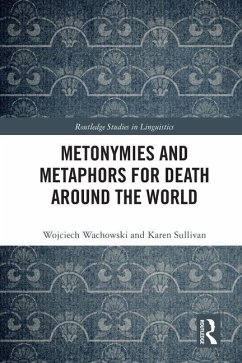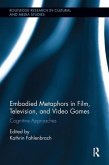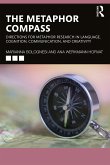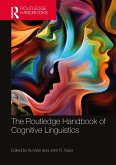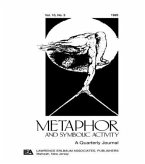This book reflects on the ways in which metonymy and metaphor are used conceptually and linguistically to mitigate the more difficult dimensions of death and dying, setting out a unique line of research within Conceptual Metaphor Theory.
The volume argues that metonymic and metaphoric descriptions of death and dying reflect taboos, concealment, and other considerations not found in figurative descriptions of life, producing distinct forms of euphemism, frames, and mental spaces particular to conceptualizations of death.
The first part takes a closer look at metonymy to illuminate the ways in which it allows a person to zoom in on death's more inoffensive dimensions or zoom out from its more troubling aspects. The second part focuses on the more palatable concepts which metaphorically structure and help to better understand death.
A wide range of classical and modern examples from European, Asian, Australian, and African languages and cultures showcase points of overlap and divergence.
Opening up new lines of inquiry into research on death and dying and offering a linguistically focused complement to anthropological and religious studies on the topic, this book will be of interest to scholars in cognitive linguistics, sociolinguistics, cross-cultural communication, and cultural studies.
The volume argues that metonymic and metaphoric descriptions of death and dying reflect taboos, concealment, and other considerations not found in figurative descriptions of life, producing distinct forms of euphemism, frames, and mental spaces particular to conceptualizations of death.
The first part takes a closer look at metonymy to illuminate the ways in which it allows a person to zoom in on death's more inoffensive dimensions or zoom out from its more troubling aspects. The second part focuses on the more palatable concepts which metaphorically structure and help to better understand death.
A wide range of classical and modern examples from European, Asian, Australian, and African languages and cultures showcase points of overlap and divergence.
Opening up new lines of inquiry into research on death and dying and offering a linguistically focused complement to anthropological and religious studies on the topic, this book will be of interest to scholars in cognitive linguistics, sociolinguistics, cross-cultural communication, and cultural studies.
"The title of this book should not deceive anyone. The book is much more, and much more important, than just an annotated collection of interesting metaphors and metonymies that deal with death in a large number of languages. It presents the reader with a coherent explanation of why the metaphors and metonymies, and the thought patterns that go with them, are both convergent and divergent around the world's cultures. In reading the book, we learn about how we think about death, how our fears affect the way we think, and how we try to make this inevitable end-stage of human life acceptable to ourselves." - Zoltán Kövecses, Eötvös Loránd University
"As scholars of rhetoric situated in cognitive linguistic studies, we believe that this book is invaluable to humanities and social science scholars invested in cognitive linguistics, sociolinguistics, intercultural communication, and cultural studies, encouraging scholars to explore metaphorical and metonymical mechanisms in discourses across other cultures and to generate more insightful triumphs." - Shukang Li & Hailiang Yin (2023): Metonymies and metaphors for death
around the world, Studia Neophilologica
"Overall, this book provides a substantial insight into how most euphemisms and metaphors can take on a more subtle form and not only serve to replace a taboo, but can also be used by politicians to address specific issues in broader innocuous terms or in less threatening ways for the public."- Fang Zhu, Guangdong University of Foreign Studies,China
"As scholars of rhetoric situated in cognitive linguistic studies, we believe that this book is invaluable to humanities and social science scholars invested in cognitive linguistics, sociolinguistics, intercultural communication, and cultural studies, encouraging scholars to explore metaphorical and metonymical mechanisms in discourses across other cultures and to generate more insightful triumphs." - Shukang Li & Hailiang Yin (2023): Metonymies and metaphors for death
around the world, Studia Neophilologica
"Overall, this book provides a substantial insight into how most euphemisms and metaphors can take on a more subtle form and not only serve to replace a taboo, but can also be used by politicians to address specific issues in broader innocuous terms or in less threatening ways for the public."- Fang Zhu, Guangdong University of Foreign Studies,China

